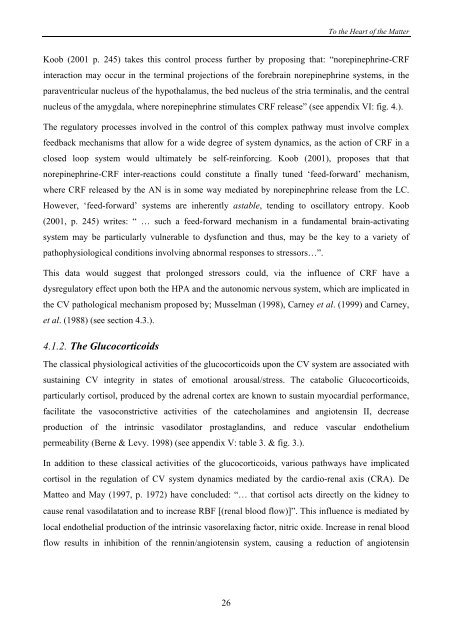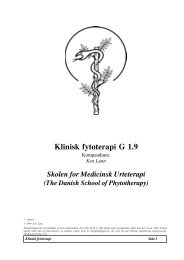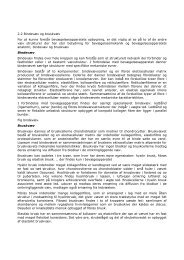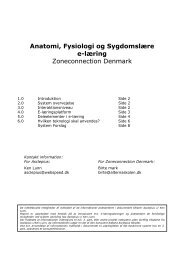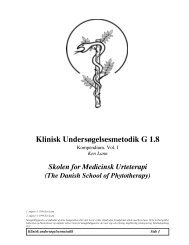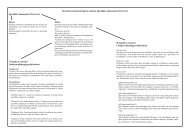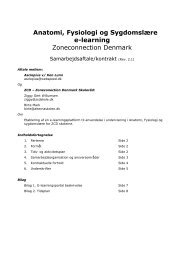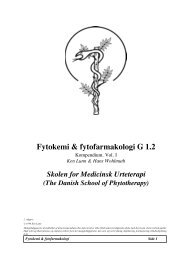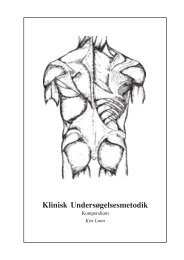PDF File - Asclepius Herbal Consultancy
PDF File - Asclepius Herbal Consultancy
PDF File - Asclepius Herbal Consultancy
You also want an ePaper? Increase the reach of your titles
YUMPU automatically turns print PDFs into web optimized ePapers that Google loves.
To the Heart of the Matter<br />
Koob (2001 p. 245) takes this control process further by proposing that: “norepinephrine-CRF<br />
interaction may occur in the terminal projections of the forebrain norepinephrine systems, in the<br />
paraventricular nucleus of the hypothalamus, the bed nucleus of the stria terminalis, and the central<br />
nucleus of the amygdala, where norepinephrine stimulates CRF release” (see appendix VI: fig. 4.).<br />
The regulatory processes involved in the control of this complex pathway must involve complex<br />
feedback mechanisms that allow for a wide degree of system dynamics, as the action of CRF in a<br />
closed loop system would ultimately be self-reinforcing. Koob (2001), proposes that that<br />
norepinephrine-CRF inter-reactions could constitute a finally tuned ‘feed-forward’ mechanism,<br />
where CRF released by the AN is in some way mediated by norepinephrine release from the LC.<br />
However, ‘feed-forward’ systems are inherently astable, tending to oscillatory entropy. Koob<br />
(2001, p. 245) writes: “ … such a feed-forward mechanism in a fundamental brain-activating<br />
system may be particularly vulnerable to dysfunction and thus, may be the key to a variety of<br />
pathophysiological conditions involving abnormal responses to stressors…”.<br />
This data would suggest that prolonged stressors could, via the influence of CRF have a<br />
dysregulatory effect upon both the HPA and the autonomic nervous system, which are implicated in<br />
the CV pathological mechanism proposed by; Musselman (1998), Carney et al. (1999) and Carney,<br />
et al. (1988) (see section 4.3.).<br />
4.1.2. The Glucocorticoids<br />
The classical physiological activities of the glucocorticoids upon the CV system are associated with<br />
sustaining CV integrity in states of emotional arousal/stress. The catabolic Glucocorticoids,<br />
particularly cortisol, produced by the adrenal cortex are known to sustain myocardial performance,<br />
facilitate the vasoconstrictive activities of the catecholamines and angiotensin II, decrease<br />
production of the intrinsic vasodilator prostaglandins, and reduce vascular endothelium<br />
permeability (Berne & Levy. 1998) (see appendix V: table 3. & fig. 3.).<br />
In addition to these classical activities of the glucocorticoids, various pathways have implicated<br />
cortisol in the regulation of CV system dynamics mediated by the cardio-renal axis (CRA). De<br />
Matteo and May (1997, p. 1972) have concluded: “… that cortisol acts directly on the kidney to<br />
cause renal vasodilatation and to increase RBF [(renal blood flow)]”. This influence is mediated by<br />
local endothelial production of the intrinsic vasorelaxing factor, nitric oxide. Increase in renal blood<br />
flow results in inhibition of the rennin/angiotensin system, causing a reduction of angiotensin<br />
26


